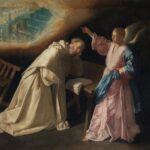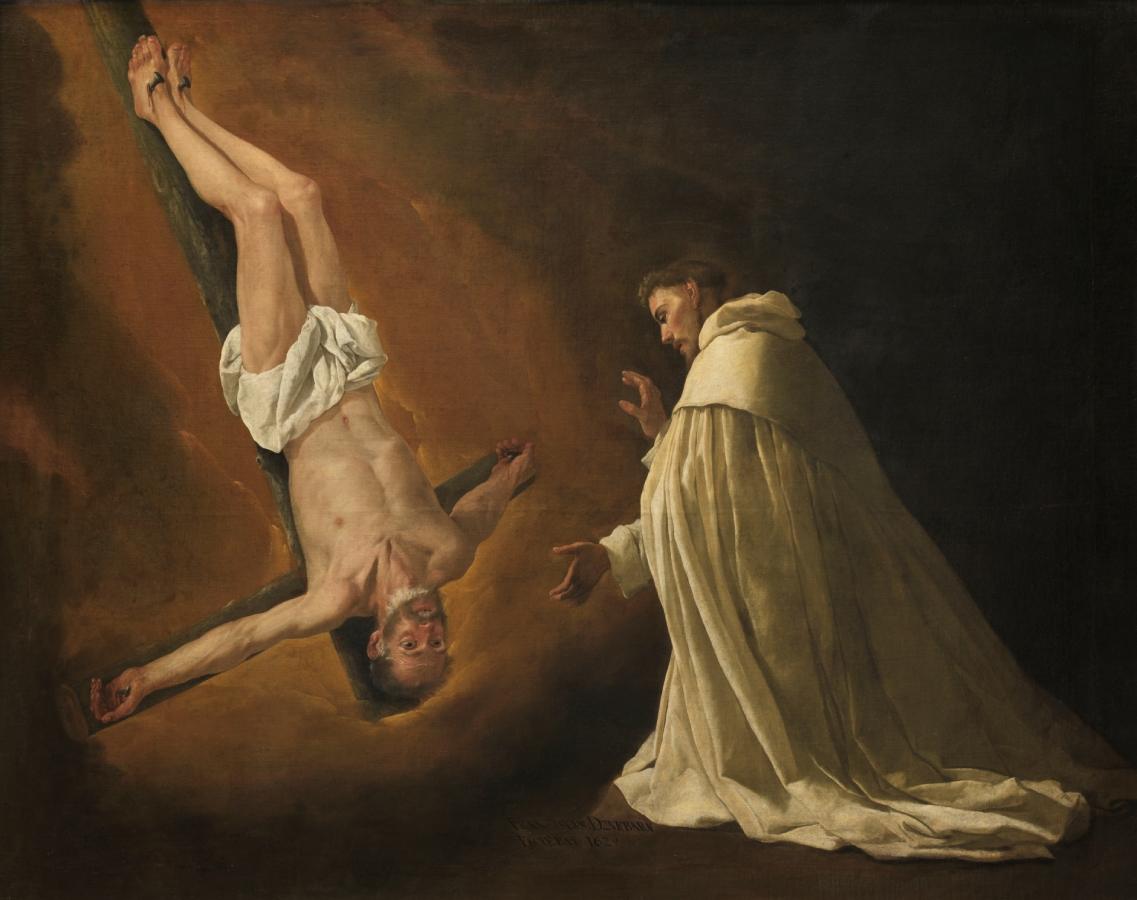Zurbarán, Francisco de (1598-1664)
Aparición de san Pedro a san Pedro Nolasco (Apparition of St. Peter to St. Peter Nolasco)
1629
Oil on canvas, 179 x 223 cm
Museo del Prado, Madrid
Saint Peter Nolasco, founded the order of Our Lady of Mercy, also known as the Mercederians, whose main objective was to rescue Christians held captive by the Muslims. The convent of la Merced Calzada for which this work was painted had been founded by Ferdinand III in 1249 -the year Pedro Nolasco died- but it was entirely reconstructed in the early 17th century. In August 1628, Zurbarán was commissioned to paint twenty-two scenes from the saint’s life on the occasion of his canonization, which took place in Rome a month later. It is unlikely that he delivered all twenty-two paintings, and to date, only eleven have been identified. The present work shows one of the saint’s visions. According to Friar Alonso Remón’s Historia General de la Orden de N. S. de la Merced (Madrid, 1618): Pedro Nolasco was very eager to go to Rome to visit Saint Peter’s tomb, and his patron saint appeared to him on three consecutive nights to console him for not being able to go. On the third night, as he was praying, Saint Peter appeared to him, crucified upside down, and urged him to remain in Spain, where he had much to do. For the composition of this scene, Zurbarán must have been instructed to follow the print by J. F. Greuter that depicts the episode after to a drawing by Jusepe Martínez (1601-1682). As a young artist in Rome, Martínez had been asked by Cardinal Borja to make a series of drawings of Saint Peter Nolasco’s life, which were engraved and published in 1627. However, Zurbarán manages to transform the scene from that print into a spectacular meeting of the divine and earthly spheres -one vibrant with incandescent light, and the other, intense and physically realistic. Unlike the print, Zurbarán’s work does not show details of the ecclesiastical setting: the saint and his vision are enveloped in profound darkness and abstracted from all material surroundings. The two Peters contemplated each other fixedly in a spiritual communion that transcends time and space. (Fábulas de Velázquez. Mitología e Historia Sagrada en el Siglo de Oro / edición a cargo de Javier Portús Pérez, Madrid, Museo Nacional del Prado, 2007, p.322)
Companion:
 Zurbarán, Francisco de (1598-1664)
Zurbarán, Francisco de (1598-1664)
Visión de san Pedro Nolasco
1629
Museo del Prado, Madrid
